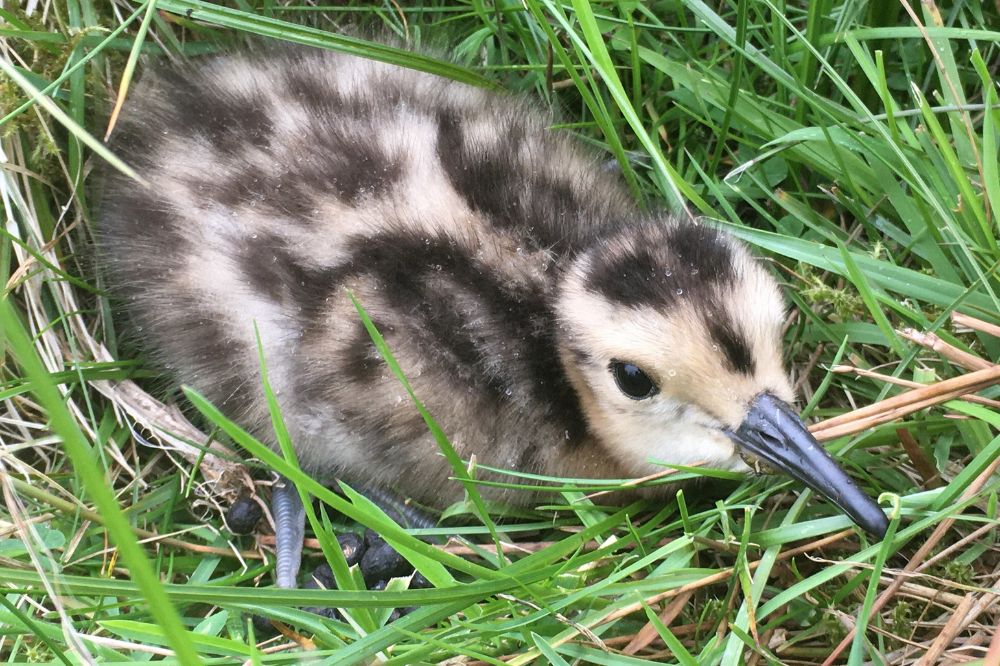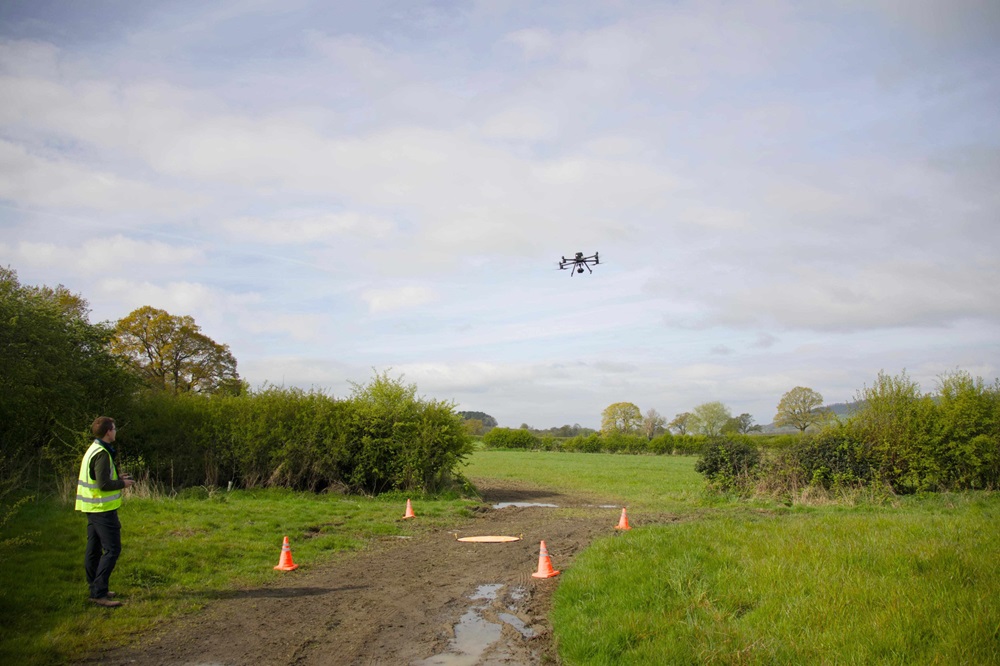Drones used to save elusive curlew nests from farm machinery

Researchers have developed a new drone technique to locate and protect curlew chicks from being killed by machinery or predators.
The Game & Wildlife Conservation Trust (GWCT) Wales have been working with farmers and using drones to find the nests of the elusive wader from the air.
The drone work has been developed by GWCT over five years of surveying various species across Wales, including deer, brown hare, grey squirrels, feral goats, grey seals, partridge, terns as well as curlew.
Using a combination of thermal and zoom cameras operated from a drone, the nests can be located very quickly and accurately, while causing no disturbance to the birds.
GWCT conservationists and curlew experts James Warrington and Katie Appleby have spent the breeding season locating curlew and other wading bird nests, and moving chicks to safety before they harvest crops or cut fields.
Curlew numbers in Wales have declined sharply and it is predicted that it may become extinct as a viable breeding population within 10 years.
GWCT is part of a 3-year partnership project called ‘Curlew Connections Wales’, which aims to locate and monitor breeding curlew by working with farmers and the local community to find and protect nests from predation, alongside conducting predation management, across three sites in Wales.

No disturbance
Through this work in Montgomeryshire and North Radnorshire the GWCT has been able to show the viability of drones as a research tool that causes no disturbance to adults.
The technique leaves no scent trails that can lead predators to the nests, proving the success of methodology that we have been developing for five years.
Staff have also built relationships with many farmers over the years and are regularly called upon to offer this service as a practical conservation tool.
Working with farmers, through the Trust’s Curlew projects, has been paramount to the development of this research as they allow GWCT Wales access to their land and show a passionate interest in and actively take part in the conservation work.
James Warrington, GWCT Projects Officer for Wales, said: “Curlew nests are notoriously hard to find as adults rarely fly directly to the nest but opt to land away from the area and walk in slowly and usually through cover.
“To pinpoint nests through ground observation takes a lot of time, hours or days, as observers need to calculate approximate areas where the nest may be and then search that area, this leaves trails and scent that predators can see, smell and use.
“Using the drone, we can find a nest in five minutes without setting foot in the field.
“Our team can then help farmers to protect located nests with electric fencing, move any chicks from fields where work is about to take place or carry out other important conservation or predation management work.
“Not only does this save us a lot of time to get on with other important tasks, but the farmer can also get on with the hay cutting knowing no curlew chicks are being harmed.”
AI
The GWCT Wales drone team is now working on expanding the technology and liaising with external partners to develop AI recognition of individual species from the air.
The team is also due to commence upland bird surveys in the north of England, and will follow curlew chicks and adults ringed this summer to their coastal wintering grounds to monitor them there.
Hours of footage and images collected will also be analysed by researchers trying to learn more about the nesting curlews’ habitat.
The drone technology is the most advanced available, and includes thermal camera, zoom camera, and laser range finder with pin-point location function.
With the laser range finder a point can be placed on the hand controller screen, and from that researchers get very accurate location co-ordinates.
James said: “By studying the patterns in the fields made by the chicks, which are only visible in aerial shots, we can look at how far they have to water, to hedges and other features that offer cover.
“It will also help us understand how avian predators see the landscape and work out where chicks are. Having this knowledge is the first step in figuring out how to better protect curlew from corvids and raptors.”
Support our Nation today
For the price of a cup of coffee a month you can help us create an independent, not-for-profit, national news service for the people of Wales, by the people of Wales.




